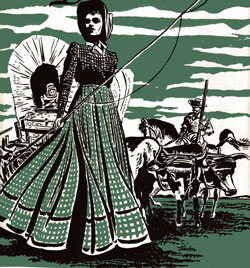April is hope.
--Gladys Taber, The Book of Stillmeadow (1948)
The poet T. S. Eliot described April as the “cruelest month” but I disagree. For me April is the kindest. Resurrection is her signature, as every blossom bears profound witness to the miracle of rebirth. Deep within me, I sense once again the stirring of hope.
Is there any feeling more thrilling than the return of hope? How does hope send up its slender shoots through the dense and rocky soil of despair and around the weeds of regret? One minute, like a garden, you are dormant; life’s compromises and complexities have become so entangled, your own growth is stunted. You go through the motions but it is all a near-life experience. Then suddenly, hope springs alive, and you begin to reach and stretch for the Light. A smile catches you unaware. Perhaps you find yourself singing along to a tune on the radio as you drive or fold the laundry. Nothing appears to have changed outwardly, but once again you begin to feel a pulse. Your own.
This week-end we observe the celebration of Eastertide. Of all the holidays, I have the cheeriest memories of Easter, which come flooding back. As a child, the anticipation of pastel dresses, shiny black patent leather Mary Janes, ruffled socks and, of course, a new bonnet which never stayed on your head because it was nearly always blustery on Easter, so you had to wear your winter coat. The early morning search for the Easter basket, candy eaten in secret, especially yellow marshmallow chicks because you’re not supposed to eat anything before Holy Communion. Later, there would be an egg hunt and games in the backyard with prizes; egg salad sandwiches for a week, sorting jelly beans by color and comparisons of chocolate bunnies—hollow versus solid. My Irish Nana always gave us solid milk chocolate rabbits, which inevitably would be found half nibbled, earless and moldy underneath the dust ruffle during the spring clean in May!
But my favorite and most cherished Easter memories involve my darling daughter, Kate, because she was (and remains) absolutely adorable, so much fun to plan treats for and play with—she is still my best pal and every Easter she will forever be 18-months-old dressed in a pink rose bud pinafore and wandering with a tiny basket hunting for eggs for the first time, holding her first Easter egg up to me with glee, throwing her head back and roaring with laughter, as if we had discovered the meaning of life …. Together … at this perfect moment. And we did. And isn’t it all fabulous? And it was.
Kate at 18-months-old, on the hunt for Easter eggs.
Easter egg trees, sowing the living Easter basket with fresh real, green grass, egg coloring, hat trimming, hot cross buns and an annual addition to her Beatrix Potter Peter Rabbit books, stuffed animals and china collection (which, admittedly, really was for me). Looking back I’m amazed she didn’t end up with a real bunny in the basket (How did that one slip past me? Probably because we had cats galore). But most of all, the Crabtree and Evelyn Peter Rabbit carrot cookies, so there was something vaguely nutritious before candy. She remembers little of this. Mothers discover to our astonishment and horror when their children are grown that there are huge voids where we’re concerned. We never did a thing, Babe—Halloween costumes, birthday goody bags, fairy tea parties, playoff games, sports practice—gone, gone, gone into the firmament, gone—and I’m sure this is true, childhood being a parallel reality for all of us. But the memories become more vivid on the other side of fifty. And the happy ones, beyond precious. We had a wonderful life and they were the center of our cosmos. Someday they’ll remember they did, too.
An Easter visit at the White House.
As I said, the poet was wrong. April is the kindest month, for it is the month of awakening again, the month we begin to take nothing for granted, savor the small, seek the sacred in the ordinary, create boundaries that protect all we cherish, lavish love unconditionally and make Easter baskets to fit the adored recipient as she or he is today, not necessarily the ones in our secret recollections of the heart.
A blessed Passover, joyous Easter and Spring to all of you this week Babes dearest.
Sending my love and a wish for a perfect chocolate bunny…
XO SBB




































































